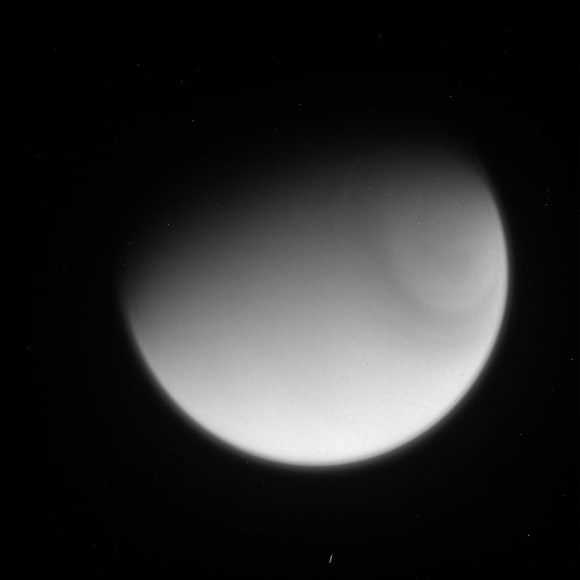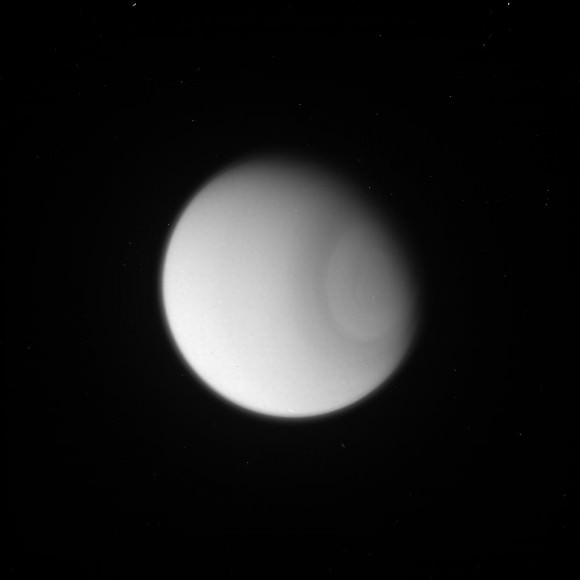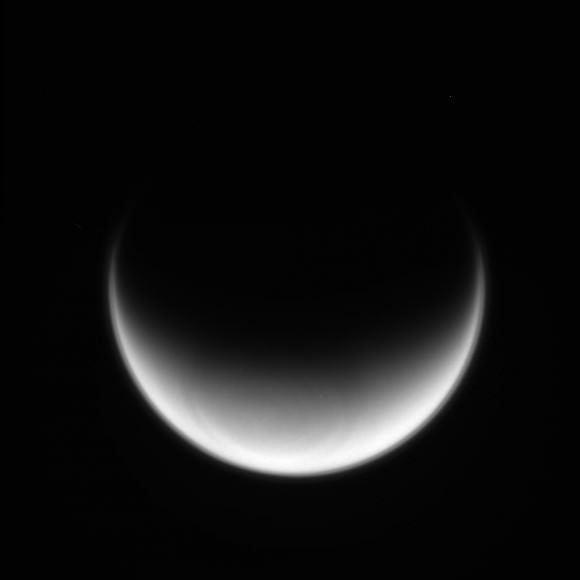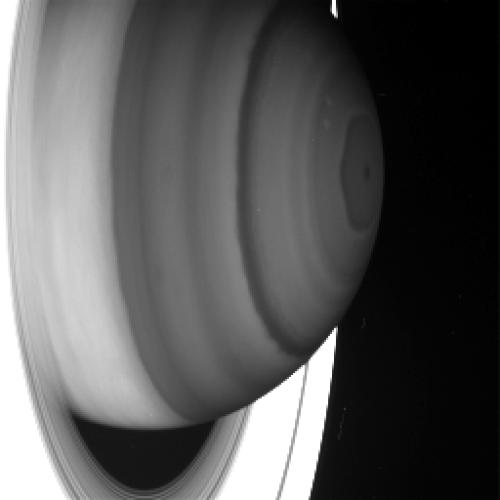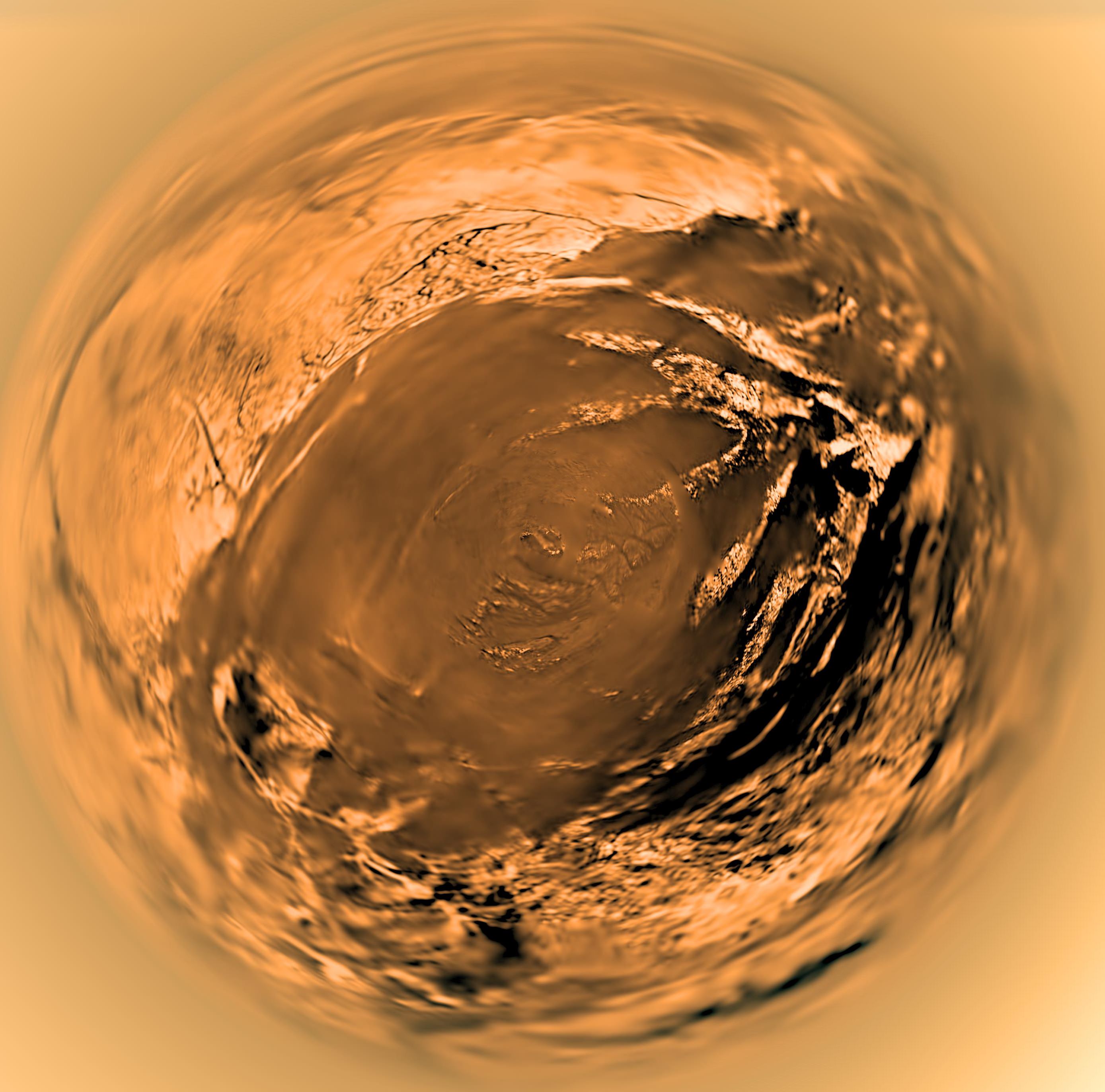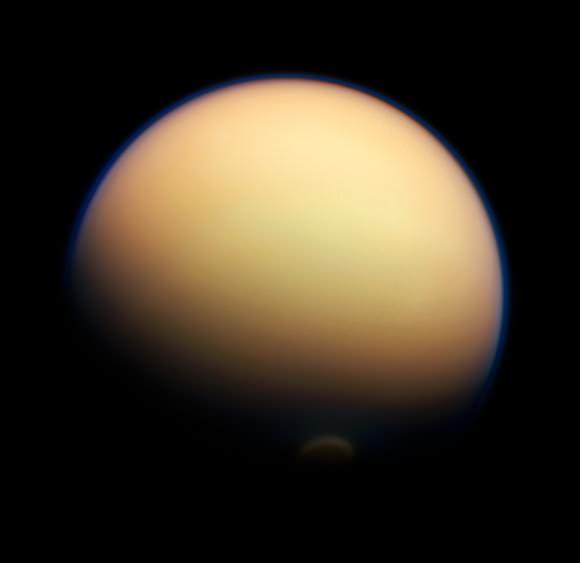Is the surf up yet on Titan? As the moon of Saturn moves towards northern summer, scientists are trying to spot signs of the winds picking up. This weekend, the Cassini spacecraft plans a look at the the largest body of liquid on Titan, Kraken Mare, to see if there are any waves on this huge hydrocarbon sea.
Cassini will make the 105th flyby of Titan on Monday (Sept. 22) to probe the moon’s atmosphere, seas and even a crater. The spacecraft will examine “the seas and lakes of the northern polar area, including Kraken and Ligeia at resolution better than 3 miles (5 kilometers) per pixel,” the Cassini website stated.
Besides wet areas of Titan, Cassini will also look at dunes and the relatively fresh-looking Sinlap crater, where scientists hope to get a high-resolution image. Managers also plan a mosaic of Tsegihi — a bright zone south of the equator — and the darker dune-filled area of Fensal. The spacecraft additionally will examine aerosols and the transparency of hazes in Titan’s atmosphere.
Titan is of interest to scientists in part because its chemistry is a possible precursor to what made life possible. Earlier this week, Cassini transmitted several raw images of its view of Titan and Saturn right now — some of the latest pictures are below.
